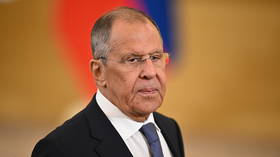IMF ‘encourages’ India to lift ban on rice exports

The International Monetary Fund (IMF) has said India’s recent move to halt the export of non-basmati white rice is likely to exacerbate volatility in food prices globally and has encouraged India to remove the restrictions. India is the world’s largest rice exporter, accounting for over 40% of global shipments.
The country’s government said last week that it would restrict exports of non-basmati rice to calm domestic rice prices, which had risen more than 30% since October 2022. While halting overseas sales of the grain with “immediate effect,” the government said it will allow consignments of the rice to be exported under certain conditions, like in cases where loading of rice on a ship has commenced before the notification. The ban does not cover other categories of the grain, such as par-boiled non-basmati rice and basmati rice.
Addressing a press conference on the release of the IMF’s latest World Economic Outlook Update, in which the body has revised India’s growth forecast upwards to 6.1% for the current fiscal, Pierre-Olivier Gourinchas, the US-based fund’s chief economist, said India’s restrictions on grain exports are likely to exacerbate volatility in food prices in the rest of the world. “So, they are certainly something that we would encourage the removal of, these types of export restrictions, because they can be harmful globally,” he explained.
Speaking to the The Hindu BusinessLine podcast, Pushan Sharma, director of research at consultancy CRISIL, noted that, as India is the largest exporter of rice, the ban on a certain category “is definitely going to create some void in the global market.” However, he suggested, with some of the countries that import significant amount of rice from India, mainly in Africa, in the Middle East, as well as Bangladesh and Nepal, “trade is still likely to happen on the government-to-government basis.”
India’s latest move adds to an earlier but more limited export restriction on rice. In September 2022, the country banned exports of broken rice and imposed a supplemental tariff of 20% on exports of non-basmati rice.
However, even then New Delhi’s rice exports still reached a record high of 22.3 million metric tons in the 2022, according to the United States department of agriculture (USDA) April 2023 crop outlook. This is more than the combined shipments of the three next-largest rice exporters, Thailand, Vietnam and Pakistan. The report noted that despite last year’s export ban on broken rice, and the 20% export tax levy on white rice, “export demand for Indian rice is strong. Global rice prices have risen to absorb the export tax.”
India exported 17.86 million tons of non-basmati rice in 2022, including 10.3 million tons of non-basmati white rice – the category on which the government has not placed restrictions. Major destinations of India’s non-basmati white rice exports include the US, Thailand, Italy, Spain, and Sri Lanka. Immediately after the rice ban was reported in the media, viral videos showed members of the Indian diaspora in some parts of the US, Canada and Europe hoarding rice supplies. CRISIL’s Sharma suggested such reactions are rather “media frenzy than reality,” since most consumers in the diaspora buy basmati rice, which hasn’t been affected.













